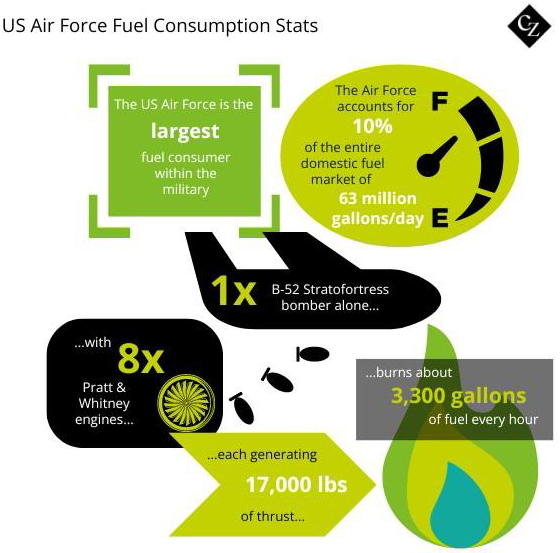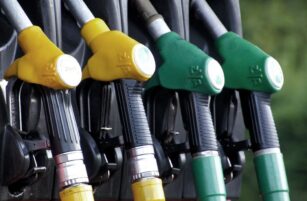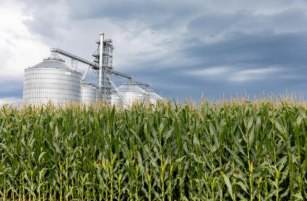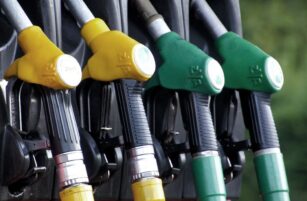Insight Focus
The US Department of Defense is one of the largest single energy consumers on the planet. Now, it is embracing SAF technology, which is bound to provide a huge boost to ethanol and corn producers.
Agencies Adopt SAF Grand Challenge
As nations around the world continue the march toward massive reductions in greenhouse gas (read CO2) emissions, sustainable aviation fuel (SAF) promises to play a role in their efforts to slow global climate change.
In the US, the Department of Defense (DOD) is participating, along with the Departments of Energy, Transportation and Agriculture, in the Biden administration’s SAF Grand Challenge that will attempt to reduce the cost, enhance the sustainability, and expand the production and use of SAF.
Stated goals of the challenge include achieving a minimum of a 50% reduction in life cycle greenhouse gas emissions compared conventional fuel and meeting a goal of supplying sufficient SAF to meet 100% of aviation fuel demand by 2050.
Military Fuel Use Under Scrutiny
As a big consumer of aviation fuel, the DOD is investing in a range of initiatives to improve the efficiency of legacy aircraft and the development of more energy efficient new aircraft. Some examples, subject to appropriations, include almost USD 900 million for an Air Force B-52 Commercial Engine Replacement Program, an Army Improved Engine Turbine Program, Adaptive Engine Transition Program, Next-Generation Adaptive Propulsion Program, and Air Force Legacy Aircraft Drag Reduction Program.
The current state of the aviation fuel market and the DOD’s need for high performance capabilities in austere environments suggests a continued reliance on liquid fuels in the near to midterm. However, industry and the DOD continue to explore and develop alternatives to fossil fuels that maintain or enhance operational effectiveness while also improving supply chain resilience.
One potential alternative is SAF. In the near term, the DOD says it will continue ongoing interagency, academic, and industry collaboration while sustaining the appropriate testing and qualification of commercially approved SAF for use in DOD equipment and infrastructure.
The DOD said it is taking steps to use all approved SAF pathways in the global marketplace and is ready to take advantage of alternatives to fossil fuels, including ethanol-enhanced aviation fuels.
A fiscal year 2023 defence spending agreement published in December requires the DOD to prepare a plan for increasing the production and use of SAF in the Pentagon’s aviation operations. The DOD is required to generate a plan for using a jet fuel blend, produced in the US from domestic feedstock sources, containing at least 10% SAF by 2028. The fuel would be used by facilities in a pilot programme – meaning it would not apply to the entire force.

The US Air Force is the largest consumer of jet fuel within the military, accounting for about 10% of the entire domestic market of 63 million gallons per day. A B-52 Stratofortress bomber, for example, with eight Pratt & Whitney turbofan engines, each generating 17,000 pounds of thrust, burns about 3,300 gallons of fuel per hour.
Other Governments Act
Other militarized nations, such as the UK, are also striving to lower their carbon footprint. The Royal Air Force (RAF) in 2022 carried out a world first 100% sustainable fuel flight using a military aircraft the size of an Airbus A330. The flight was a joint endeavour between the RAF, Ministry of Defence and industry partners Airbus, AirTanker and Rolls-Royce, with the fuel supplied by Air BP.
In February 2023, France’s Ministry for Armed Forces, in cooperation with Safran, Airbus Helicopters and Total Energies, performed the first test flight of an NH90 helicopter on SAF without any engine modification. Safran Helicopter Engines is now working to certify operations with 100% SAF and assessing any operational impact.
The Swiss Air Force has set itself the goal of using 50% sustainable fuels to power its military jets.












